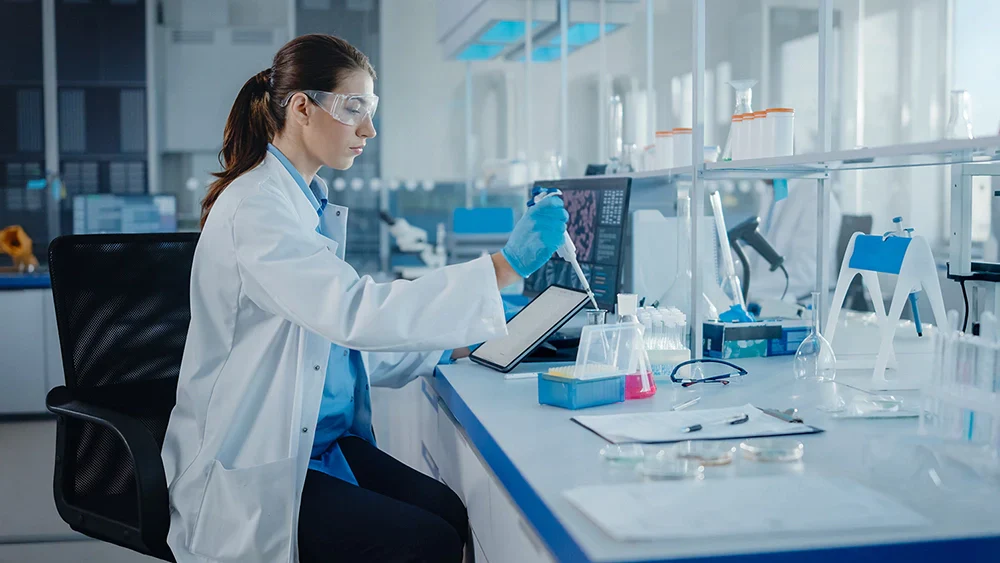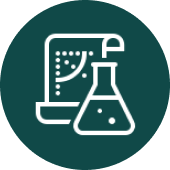1 Seriki, SA, Odetola, AO, & Adebayo OF (2019). Analysis of phytoconstituents of Desmodium adscendens in relation to its therapeutic properties. American Journal of Biomedical Science & Research, 2(4).
2 D'agostino, M., Pizza, C., & De Simone, F. (1995). Flavones and flavonol glycosides from Desmodium mollicum. Fitoterapia, 66, 384-385.
3 Shojaii, A., & Abdollahi Fard, M. (2012). Review of Pharmacological Properties and Chemical Constituents of Pimpinella anisum. ISRN pharmaceuticals, 2012, 510795.
4 anise. (2021). In Drugs and Lactation Database (LactMed). National Library of Medicine (US).
5 Gardner, Z., & McGuffin, M. (2013). American Herbal Products Association botanical safety handbook (2nd ed., pp. 657-659). CRC Press.
6 Koeduka, T., Baiga, TJ, Noel, JP, & Pichersky, E. (2009). Biosynthesis of t-anethole in anise: characterization of t-anol/isoeugenol synthase and an O-methyltransferase specific for a C7-C8 propenyl side chain. Plant physiology, 149(1), 384–394.
7 Gordillo, G., Bonilla, P., Zúñiga, H., Parreño, J., Guerra, G., Hernández, L., & Solano, Gabriela. (2019). Protective effect of Desmodium molliculum EAM (manayupa) in rats with naproxen-induced liver toxicity. Revista Peruana de Medicina Integrativa, 4(3), 76-82.
8 Asadollahpoor, A., Abdollahi, M., & Rahimi, R. (2017). Pimpinella anisum L. fruit: Chemical composition and effect on rat model of nonalcoholic fatty liver disease. Journal of research in medical sciences : the official journal of Isfahan University of Medical Sciences, 22, 37.
9 Amina, B., Nadia, AH, Kahloulakjaled, Nesrine, S., & Abdelkader, A. (2016). Nephroprotective effect of Pimpinella anisum L. aqueous extract against lead toxicity: In vivo study. International Journal of Green Pharmacy, 10(2), 91.
10 Pourgholami, MH, Majzoob, S., Javadi, M., Kamalinejad, M., Fanaee, GHR, & Sayyah, M. (1999). The fruit essential oil of Pimpinella anisum exerts anticonvulsant effects in mice. Journal of Ethnopharmacology, 66, 211-215.
11 Karimzadeh, F., Hosseini, M., Mangeng, D., Alavi, H., Hassanzadeh, GR, Baya, M., Jafarian, M., Kazemi, H., & Gorji, A. (2012). BMC Complementary and Alternative Medicine, 12(76).
12 Rojas, R., Bustamante, B., Bauer, J., Fernández, I., Albán, Joaquina, & Lock, O. (2003). Antimicrobial activity of selected Peruvian medicinal plants. Journal of Ethnopharmacology, 88, 199-204.
13 Bussman, RW, Sharon, D., Perez, F., Díaz, D., Ford, T., Rasheed, T., Barocio, Y., & Silva, R. (2008). Antibacterial activity of northern Peruvian medicinal plants. Arnaldoa, 15(1), 127-148.
14 Gülçin, I., Oktay, M., Kireçci, E., & Küfrevioglu, OI (2003). Screening of antioxidant and antimicrobial activities of anise (Pimpinella anisum L.) seed extracts. Food Chemistry, 83, 371-382.
15 Lee, JB, Yamagishi, C., Hayashi, K., & Hayashi, T. (2011). Antiviral and immunostimulating effects of lignin-carbohydrate-protein complexes from Pimpinella anisum. Bioscience, biotechnology, and biochemistry, 75(3), 459–465.
16 Lock, O., Castillo, P., Doroteo, V., & Rojas, R. (2005). Antioxidant activity in vitro of Peruvian medicinal plants. Acta Horticulturae 675(675), 103-106.
17 Delazar, A., Biglari, F., Esnaashari, S., Nazemiyeh, H., Talebpour, AH, Nahar, L., & Sarker, SD (2006). GC-MS analysis of the essential oils, and the isolation of phenylpropanoid derivatives from the aerial parts of Pimpinella aurea. Phytochemistry, 67(19), 2176-2181.
18 Singh, G., Kapoor, IPS, Sing, P., de Heluani, CS & Catalan, CAN (2008). Chemical composition and antioxidant potential of essential oil and oleoresins from anise seeds (Pimpinella anisum L.). International journal of essential oil therapeutics, 2, 122-130.
19 Al Mofleh, IA, Alhaider, AA, Mossa, JS, Al-Soohaibani, MO, & Rafatullah, S. (2007). Aqueous suspension of anise "Pimpinella anisum" protects rats against chemically induced gastric ulcers. World journal of gastroenterology, 13(7), 1112-1118.
20 Kreydiyyeh, S.I., Usta, J., Knio, K., Markossian, S., & Dagher, S. (2004). Aniseed oil increases glucose absorption and reduces urine output in the rat. Life Sciences, 74(5), 663-73.
21 Robles-Zepeda, RE, Velázquez-Contreras, CA, Garibay-Escobar, A., Gálvez-Ruiz, JC, & Ruiz-Bustos, E. (2011). Antimicrobial activity of Northwestern Mexican plants against Helicobacter pylori. Journal of medicinal food, 14(10), 1280–1283.
22 Wang, D., Li, Y., Zhong, H., Ding, Q., Lin, Y., Tang, S., Zong, Y., Wang, Q., Zhang, X., Yang, H. , Wang, R., & Liu, X. (2019). Alterations in the human gut microbiome associated with Helicobacter pylori infection. FEBS open bio, 9(9), 1552–1560.
23 Azimi, M., & Zahedi, M.J. (2021). Persian Herbal Medicine in Functional Dyspepsia: A Systematic Review. Current drug discovery technologies, 18(2), 272-281.
24 Mosaffa-jahromi, M., Lankarani, KB, Pasalar, M., Afsharypuor, S., & Tamaddon, AM (2016). Efficacy and safety of enteric coated capsules of anise oil to treat irritable bowel syndrome. Journal of ethnopharmacology, 194, 937-946.
25 Arguello, WH, & Simón, GG (2005). Study of the acute oral toxicity of Burbur detox, originating from NutraMedix Laboratories, LLC, Florida, USA.
26 Gordillo, G., Bonilla, P., Zúñiga, H., Guerra, G., Hernández, L., Solano, G., & Bazalar, M. (2019). Acute toxicity bioassay of Desmodium molliculum (HBK) DC Manayupa. Ciencia e Investigación, 22(1).
27 Mendocilla-Risco, M., Bellido-Marin, B., & Serrano-Mestanza, K. (2017). Pharmacovigilance and alerts about use of resources and products in traditional, alternative and complementary medicine in Perú (1997-1976). Revista Peruana de Medicina Integrativa, 2(2): 108-110.
28 Brinker, F. (2001). Herb contraindications & drug interactions (3rd ed., p. 31). Eclectic Medical Publications.
29 Zabłocka-Słowińska, K., Jawna, K., Grajeta, H., & Biernat, J. (2014). Interactions between preparations containing female sex hormones and dietary supplements. Advances in clinical and experimental medicine: official organ Wroclaw Medical University, 23(4), 657–663.
30 American Botanical Council. Herbalgram.org. (2021). Retrieved June 10, 2021, from https://www.herbalgram.org/resources/commission-e-monographs/approved-herbs/anise-seed/.










